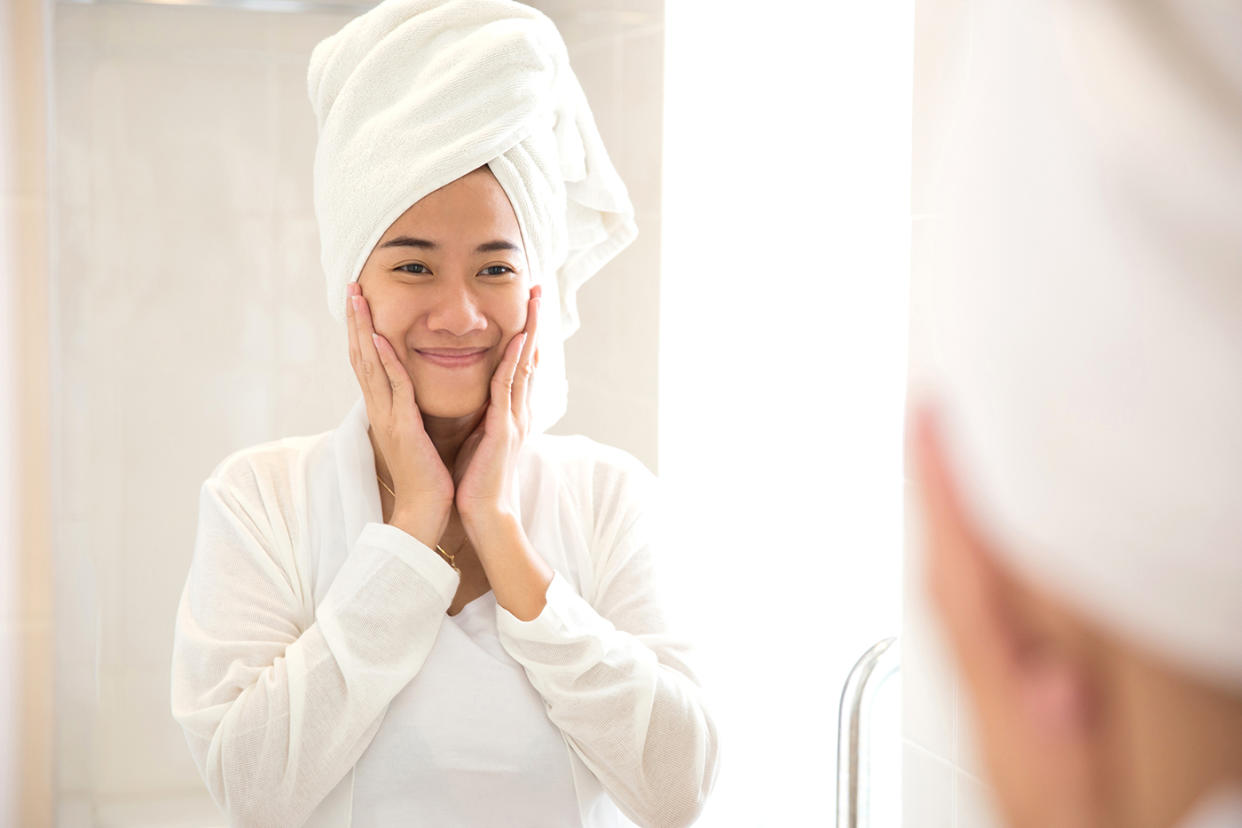Facial exercises make you look younger — no knife required

While New Year’s resolutions often center on exercising more often to strengthen your arms or tone your tummy, there’s another part of the body you may also want to work out — namely, your face.
A new study published in the journal JAMA Dermatology shows that regularly doing facial exercises — yes, working out your face — can actually make you look younger. In the study, researchers found that women ages 40 to 65 who did a 30-minute daily facial exercise program for eight weeks, followed by doing the same exercise program 3-4 times a week for 12 weeks, had younger looking skin, including fuller, firmer cheeks.
As your face ages, you lose the elasticity and fat that helps keep your skin firm. Exercises can strengthen the facial muscles, and those firmer muscles can help the shape of the face appear fuller and more youthful. “Growing the underlying muscle fills and stretches out the saggy facial skin, which with age becomes less elastic and with less fat underneath to plump it up,” lead study author Murad Alam, MD, vice chair and professor of dermatology at Northwestern University Feinberg School of Medicine and a Northwestern Medicine dermatologist, explains to Yahoo Lifestyle. “The growing facial muscle partly counteracts the age-related effects of the sagging skin and thinned-out fat.”
Though more research is needed, dermatologist Kristina Goldenberg of Goldenberg Dermatology in New York City agrees facial exercises can help — which is great news if you’re freaked out by needles or scalpels and are willing to put in the time. “If done consistently, facial exercises may increase muscle tone, giving a more plump and youthful look,” she tells Yahoo Lifestyle. “Facial exercises may help correct some volume loss that occurs with age.”
Even the researchers were surprised by how effective the facial exercises were. “I was surprised that there was an overall result, and that it was statistically significant,” Alam says. “I expected a few people to benefit and others not to, and for the results to be much more uncertain. In fact, we did find significant benefits, and our patients were quite enthusiastic across the board. Finally, I was surprised that the effects appeared to continue to improve over time — they were better at 20 weeks than at 8.”
So does this mean you can kiss fillers and Botox goodbye? Not necessarily. “We don’t want to throw away neuromodulators and filler and lasers,” says Alam. “The contour improvement from facial exercise is likely modest but real, and may augment the highly effective, minimally invasive therapies that are currently used for wrinkle and volume loss replacement. But facial exercises will not replace these more effective therapies.”
Goldenberg also notes there can be a downside to some facial exercises. “Certain facial movements, if done repeatedly, can actually intensify the appearance of wrinkles,” she says. “For instance, repeated movement of the muscles on the forehead can worsen wrinkles and make the ’11’ lines between the eyes more visible. Facial exercises that involve excessive smiling can intensify the lines around the eyes, known as crow’s feet and laugh lines. Lastly, exercises that involve puckering of the lips may worsen lines around the mouth known as smoker’s lines.”
Read more from Yahoo Lifestyle:
Why nothing you buy at the drugstore is going to clear up your cystic acne
10 products that’ll get you glowing skin — no KiraKira app required
Follow us on Instagram, Facebook, and Twitter for nonstop inspiration delivered fresh to your feed, every day.

